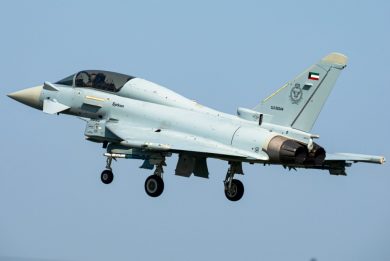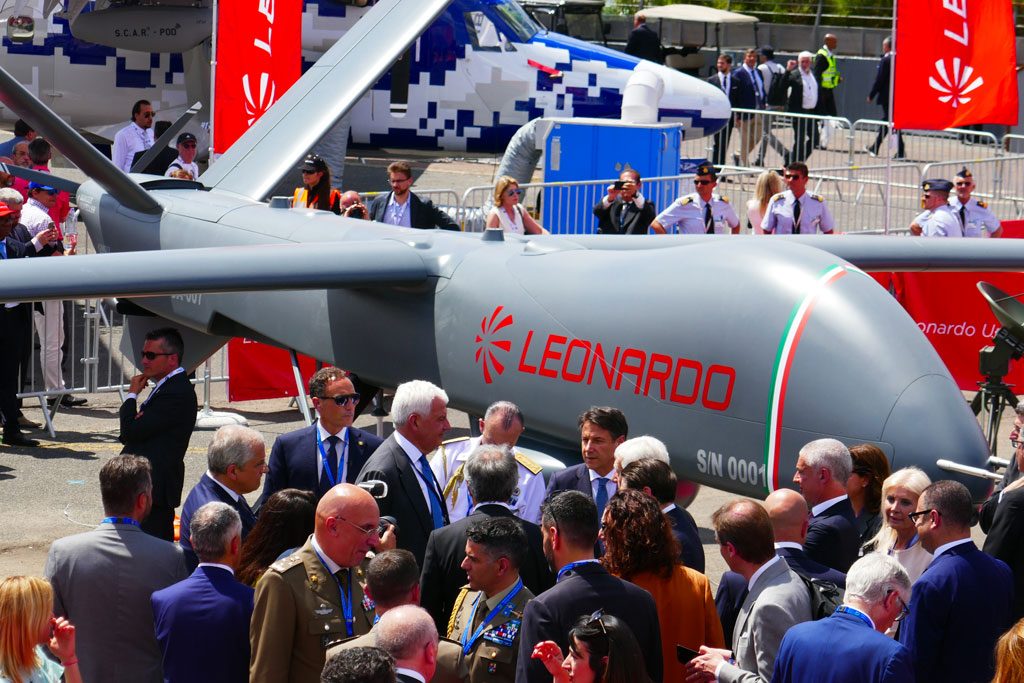
PAS19: Leonardo unveils its largest-ever unmanned air system, the Falco Xplorer
On the first day of the Paris Air Show 2019, as already anticipated by EDR On-Line (click here to the related EDR News), Leonardo unveiled its largest-ever unmanned air system, the Falco Xplorer. The new unmanned platform, which opens new civil and military markets to the group in the unmanned domain, was unveiled at the presence of Italy’s Prime Minister, Giuseppe Conte, who was visiting the Leonardo’s static display with the group’s CEO, Alessandro Profumo.
“Building on the success of the company’s Falco unmanned family, the new platform features a 1.3 ton maximum take-off weight (MTOW) with a payload capacity of 350 kg and an endurance in excess of 24 hours, with a satellite communication capability for beyond-radio-line-of-sight (BLOS) operations”, said Fabrizio Boggiani, Senior Vice President Airborne Sensors & Mission Systems, Airborne & Space Systems business unit, Electronics, presenting the new pr oduct.
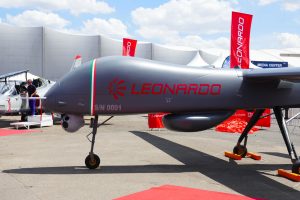
“Everything is designed in-house by Leonardo, from the aircraft itself to the sensor suite, mission system and ground control station, the Falco Xplorer being offered as both an integrated platform and as a fully managed information-superiority service. Leonardo will operate the aircraft and its sensors and manage logistics to provide actionable information directly to the customer”, he added.
With a wingspan of 18.5 meters and a length of 9 meters, the new airframe features a slightly larger nose section with over-mounted accommodating radome for BLOS operations’ satellite antenna, a high wing with wingtip-mounted sensors and ‘V’ tail assembly with a Rotax Heavy Fuel Engine (HFE). The tricycle undercarriage is high-enough to allow the installation of nose-mounted multispectral sensors turret and underbelly surveillance radar radome. “The so-called baseline ‘Block 10’ mission sensors and equipment fit for the new unmanned platform takes advantage of Leonardo’s in-house advanced electronics portfolio to offer a comprehensive Intelligence, Surveillance and Reconnaissance (ISR) capability over land and sea.
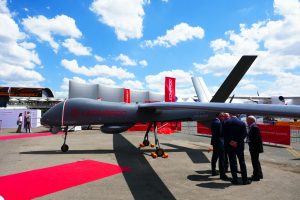
This high level of integration has a dual benefit for customers who will be able to acquire a highly capable and effective system at a competitive price”, said Boggiani. The platform will come equipped with a Gabbiano T-80 surveillance radar, LEOSS electro-optical turret, SAGE electronic intelligence (ELINT) system and an automatic identification system (AIS) for maritime use. “The sensors will be integrated through Leonardo’s powerful mission management system, which draws on the Company’s experience in both the manned and unmanned domains and includes protection from cyber-attacks as standard under the Company’s ‘secure by design’ philosophy. Leonardo can also flexibly modify the sensor suite in-line with customer requirements, including integrating third-party sensors. The platform’s Ground Control Station (GCS) allows operators to control the aircraft and its sensors and incorporates data exploitation tools, enabling the dissemination of useful information to wider C5I systems. It also provides mission data analysis, mission planning, training and simulation capabilities”, he explained.
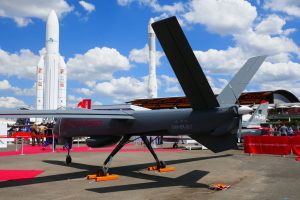
Entirely designed and manufactured in Europe, “the Falco Xplorer is not subject to International Traffic in Arms Regulations (ITAR) restrictions and its technical characteristics place it within the Missile Technology Control Regime (MTCR) class II category. Together, these make the Falco Xplorer readily exportable around the world. Designed and built on the strong demand from the market and current users of the Falco family, we have a couple of potential customers interested in the product that will be ready for production as early as 2020”, he continued.
The Falco Xplorer has been designed from the ground-up to access the widest possible market. It will undergo certification for flight in non-segregated airspace, meaning Leonardo will be able to pitch it to civil customers, such as coast guards and emergency responders, as well as to the military market. “Following the unveiling, the Falco Xplorer is expected to embark on its maiden flight in June from Trapani airport in Italy. A series of trials will then take place throughout the year, capped off by a flight campaign with the platform’s fully-integrated sensor suite on-board. A second aircraft is being readied for next September flight beginning to side the first in trials, evaluation and operational testing, even if the certification process carried out by Italian MoD’s air armament procurement and airworthiness directorate can be conducted with only one platform. The drone will be certified according to NATO STANAG4671, meaning that it will be readily approved to fly for NATO countries”, he highlighted. Even if Leonardo said the company is today working on an ISR version, the aircraft is expected to be capable to be armed, but no details were released.

